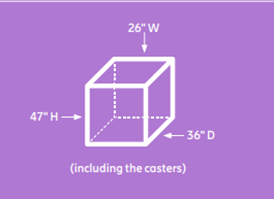5G to Go – Ericsson Network on Wheels
How big is your doorway? That question led to the innovation that produced the Ericsson Network on Wheels (NOW). Verizon, a long-time Ericsson partner, received a request from one of their customers for 5G support at an event. Now while that is not an unusual request, the event was being held in Hawaii where 5G had not yet been deployed. That prompted Verizon to turn to Ericsson.
Ericsson brought the technology ecosystem and Verizon brought a deep understanding of the needs of the business customer and the users. Together, the teams worked to define the use cases and understand what the technology can and should do.
As with any brainstorming effort, the partners asked questions. What would it take to build a pre-integrated solution? What hardware and software are required? What are the power requirements? And, once everyone understands the technical feasibility, the next question is – “What will the solution look like?”
Basic requirements. It has to fit through a doorway. It has to be portable and be something that two people can lift and carry up a set of stairs. It has to be a 5G network on wheels.
Thus began a cooperative effort to build a fully functional 5G network that could be put on a plane or in a truck and rolled into a venue. Plug it in, do some configuration and you have a 5G network all set to go, and while it takes a bit more than plugging in the box to get it all to work, setup is complete in a few hours.

From the start, engineers from the two companies formed a unified team to define the use cases, whiteboard alternatives and implement the solution. “When we approached Ericsson with this challenge, there was no question that they were the right partner for it,” says Abraham Arencibia, Director of Technology Development, Verizon. “We didn’t just come up with vaporware. It's a real ideation that translated from a whiteboard idea to an actual customer solution.”
From Demo to Deployed
The innovation and collaborative development that produced NOW for the customer demonstration, ultimately brought the clever solution from the background to center stage. At subsequent events, the NOW was turning heads.
“So, what began as a behind-the-scenes network became one of the stars of the show and gained a life of its own,” recalls Bill Goodman, Ericsson’s head of ecosystem and business development activities and partnership with Verizon.
The first NOW kit was completed in 2018 and since then, build time has been reduced by 50% and efforts continue to update and upgrade the platform. All the necessary configurations are in the box and the box can go anywhere. One of the principal attributes of 5G is the tremendous amount of bandwidth available over the wireless network. Large amounts of wireless capacity become invaluable to numerous venues, events and users where wired connections just won’t happen.
Ericsson’s network on wheels brings connectivity wherever it is needed for public safety, disaster recovery, sporting and concert venues, manufacturing and other instances that require a large amount of bandwidth. NOW can set up quickly and operate in a variety of environments. Whether supporting an event, powering a factory, or simply moving around a lot; numerous industries and customers are recognizing the value of a 5G network on wheels. As a result, both Ericsson and Verizon are deploying NOW configurations for multiple customers and use cases with more than 35 deployments in more than 15 industries.
Ultimately, the success of the effort links back to defining use cases and understanding what will benefit the end users, not just the business customer. Mobility, convenience and bandwidth are all important but if the solution doesn’t solve a problem, it’s just faster, not better.
As operators and industries continue to evaluate 5G use cases, a mobile ecosystem becomes an invaluable way to trial and better understand solutions and benefits. Deploying 5G is a big step and NOW enables practical creativity as both operators and businesses work to understand and evaluate the value and versatility of 5G to improve operations and meet their specific needs.